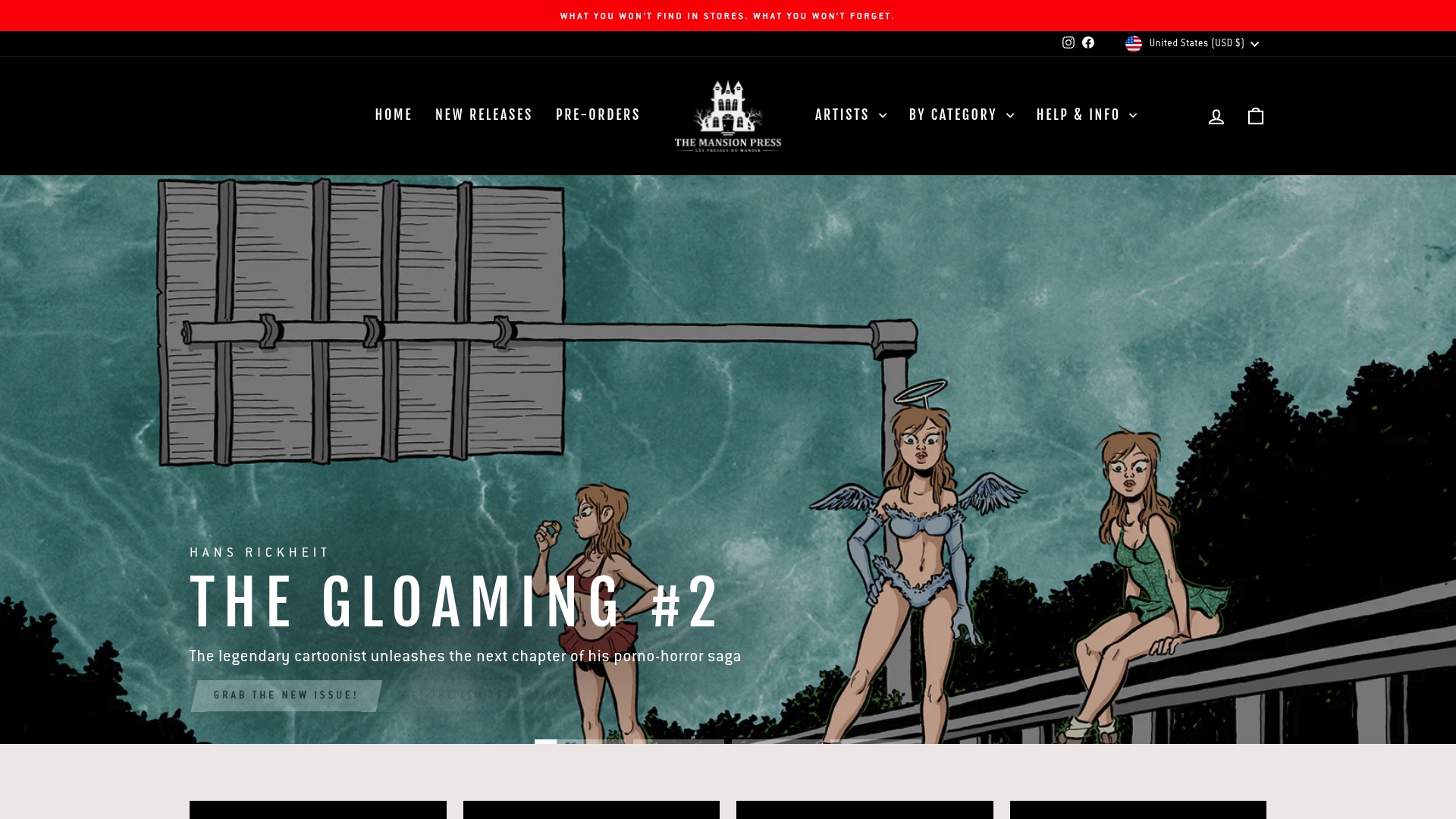7 Most Controversial Comics and Why They Matter Today
Did you know that over one third of classic comic books have faced censorship or controversy at some point in their publication history? Comics are not just colorful adventures, they often spark heated debates and challenge deep social norms. Whether probing traumatic historical events or questioning who gets to be a hero, controversial comics invite readers to think critically and engage with art on a deeper level.
Quick Summary
| Takeaway | Explanation |
|---|---|
| 1. Comics challenge societal norms. | Controversial comics serve as platforms to provoke discussions about representation, ethics, and cultural values. |
| 2. Engage critically with narratives. | Readers should analyze artistic intent and historical context beyond surface reactions to controversial comics. |
| 3. Historical memory can be conveyed through comics. | Graphic novels like Maus demonstrate how personal stories illuminate complex historical experiences and collective memory. |
| 4. Understanding censorship’s impact is essential. | Works like Seduction of the Innocent show how moral panic can govern and restrict artistic expression in the comic book industry. |
| 5. Collecting comics requires responsibility. | Responsible collectors value historical significance and ethical implications, ensuring comics serve as cultural artifacts rather than mere items. |
Table of Contents
- Understanding Controversy In Comic Art
- The Impact Of ‘Maus’ On Historical Memory
- Why ‘The Killing Joke’ Sparked Debate
- Social Commentary In ‘Persepolis’
- Censorship Around ‘Seduction Of The Innocent’
- How ‘The Boys’ Redefined Superhero Boundaries
- Collecting Controversial Comics Responsibly
1. Understanding Controversy in Comic Art
Controversy in comic art is more than sensationalism. It is a profound mechanism for challenging societal norms, exploring complex narratives, and pushing artistic boundaries.
Historically, comics have been powerful platforms for social commentary, often sparking intense debates about representation, ethics, and cultural values. As understanding violent comics and controversy in art suggests, these artistic expressions serve as critical mirrors reflecting social tensions.
Research reveals fascinating dynamics behind controversial comics. A scholarly examination of mid 20th century comic art demonstrates how moral panic significantly shaped public perception of graphic narratives. According to academic research, artists like Art Spiegelman in Maus transformed comics from mere entertainment into profound vehicles of historical memory and trauma representation.
What makes a comic controversial? Several key factors emerge:
- Challenging established social narratives
- Graphically depicting sensitive historical events
- Presenting uncomfortable social critiques
- Breaking traditional storytelling conventions
For readers and collectors, understanding controversy means appreciating comics not just as entertainment, but as important cultural artifacts. Each controversial work represents an artistic statement pushing creative and social boundaries.
Practically speaking, engaging with controversial comics requires an open mind. Read beyond surface reactions. Consider the artistic intent, historical context, and social commentary embedded in these provocative works. They are not designed to shock but to generate meaningful dialogue about complex human experiences.
By examining controversial comics through an analytical lens, you transform from a passive reader to an active cultural interpreter.
2. The Impact of ‘Maus’ on Historical Memory
Art Spiegelman’s Maus represents a groundbreaking moment in graphic storytelling that fundamentally transformed how we understand historical narrative and collective memory. This profound work transcended traditional comic book boundaries, earning unprecedented recognition by winning a Pulitzer Prize and establishing graphic novels as serious literary art.
Maus uniquely approached the Holocaust by representing Jews as mice and Nazis as cats, creating a powerful metaphorical landscape that made traumatic historical experiences accessible to broader audiences. Understanding avant-garde graphic novels reveals how innovative storytelling techniques can communicate complex historical traumas.
The graphic novel’s significance extends far beyond its artistic innovation. Historical representation through alternative mediums like comics allows younger generations to engage with challenging historical narratives in more intimate and compelling ways. Spiegelman’s work demonstrates how personal storytelling can illuminate broader historical experiences.
Key contributions of Maus include:
- Breaking academic barriers around comic art
- Humanizing historical trauma through personal narrative
- Introducing intergenerational perspectives on historical memory
- Challenging traditional Holocaust representation
For readers and scholars, Maus offers profound lessons in storytelling. It shows that powerful historical narratives are not confined to academic texts or documentary formats. Graphic novels can be sophisticated vehicles for understanding complex human experiences.
Practically speaking, engaging with works like Maus requires an open mind and willingness to see historical narratives through unconventional artistic lenses. By embracing diverse storytelling methods, we expand our collective understanding of historical memory and human resilience.
3. Why ‘The Killing Joke’ Sparked Debate
Alan Moore’s graphic novel The Killing Joke remains one of the most controversial comic narratives in modern storytelling. Published in 1988, this Batman story challenged traditional comic book boundaries by presenting a deeply psychological exploration of trauma and moral ambiguity.
The narrative centers on the Joker’s attempt to prove that anyone can be driven to madness after experiencing one terrible day. Critically, the comic sparked intense debate through its graphic depiction of Barbara Gordon’s traumatic assault, which fundamentally transformed her character’s narrative trajectory. Understanding psychological horror comics themes provides context for how such provocative storytelling challenges audience expectations.
According to the Comic Book Legal Defense Fund, the graphic novel generated significant library and academic challenges. Critics argued the work advocated sexual violence, while defenders emphasized its complex artistic exploration of psychological breakdown and systemic violence.
Key controversial elements include:
- Graphic representation of trauma
- Blurred lines between heroism and villainy
- Psychological deconstruction of character motivations
- Challenging traditional superhero narrative structures
For comic readers and cultural critics, The Killing Joke represents more than a simple story. It became a critical moment in graphic storytelling that questioned narrative conventions and explored the psychological underpinnings of heroism and villainy.
Practically speaking, engaging with controversial works requires nuanced interpretation. Readers should approach such narratives with critical awareness examining artistic intent beyond surface level shock value. The Killing Joke challenges audiences to understand complexity within seemingly straightforward good versus evil narratives.
4. Social Commentary in ‘Persepolis’
Marjane Satrapi’s Persepolis stands as a groundbreaking graphic memoir that transformed how global audiences understand personal experiences within political upheaval. Through intimate storytelling, the work dismantles stereotypical Western narratives about Iran by presenting a nuanced, deeply personal perspective of revolution and cultural identity.
The graphic novel uniquely blends personal memoir with broader social critique, revealing how individual lives intersect with massive political transformations. Understanding avant-garde graphic novels helps contextualize how artists like Satrapi use visual storytelling to communicate complex social narratives.
In her own words, Satrapi aimed to challenge monolithic representations of Iranian society by presenting a multidimensional portrait of youth experiencing political revolution. The work traces her coming of age during the Iranian Revolution, offering readers an insider perspective on social change, political repression, and personal resilience.
Key aspects of social commentary include:
- Challenging Western stereotypes about Iranian culture
- Presenting youth perspectives during political transformation
- Exploring individual agency within systemic oppression
- Humanizing experiences often reduced to political headlines
For readers and cultural critics, Persepolis demonstrates how graphic narratives can be powerful tools for cross cultural understanding. By transforming personal experience into visual storytelling, Satrapi creates a universal language that transcends geographical and cultural boundaries.
Practically speaking, engaging with works like Persepolis requires approaching them with empathy and intellectual curiosity. Readers should view such narratives as complex explorations of human experience rather than simplistic political statements. The graphic novel invites us to see beyond media representations and understand the rich emotional landscapes of individuals living through historical transformations.
5. Censorship Around ‘Seduction of the Innocent’
Fredric Wertham’s Seduction of the Innocent represents a pivotal moment in comic book history where pseudoscience and moral panic dramatically transformed artistic expression. Published in 1954, this controversial book launched an unprecedented attack on comic book content that would reshape the entire industry for decades.
The book claimed comic books were corrupting American youth, presenting sensationalized arguments about their negative psychological impacts. Complete guide to banned comics in history helps contextualize how such moral campaigns can fundamentally alter artistic mediums.
Scholarly investigations have since revealed a shocking truth. According to the Comic Book Legal Defense Fund, Wertham systematically fabricated evidence. He distorted quotes, misrepresented research data, and constructed a narrative designed to provoke maximum public outrage rather than provide genuine scientific insight.
Key consequences of Wertham’s campaign included:
- Creation of the Comics Code Authority
- Severe content restrictions for comic publishers
- Elimination of many mature storytelling themes
- Widespread censorship across the comic book industry
For modern readers and creators, Seduction of the Innocent serves as a critical reminder of how moral panic can threaten artistic expression. The book demonstrates the dangerous potential of weaponizing pseudoscience to limit creative freedom.
Practically speaking, understanding this historical moment requires recognizing how institutional power can be used to suppress artistic voices. By examining Wertham’s tactics, we learn the importance of critical thinking and resisting simplistic moral narratives that seek to control creative expression.
6. How ‘The Boys’ Redefined Superhero Boundaries
Garth Ennis’s The Boys represents a radical deconstruction of superhero mythology that challenges every traditional narrative about heroism and power. This groundbreaking comic series dismantles the romanticized superhero archetype by exposing the potential corruption inherent in unchecked corporate and personal authority.
By presenting superheroes as fundamentally flawed and often malevolent entities, The Boys transformed audience expectations about genre storytelling. Understanding underground comic creators helps contextualize how innovative artists challenge established narrative conventions.
The series confronts deep systemic issues within superhero narratives by revealing how power structures can enable widespread abuse. Its unflinching examination of corporate manipulation and individual moral compromise goes far beyond typical genre storytelling.
Key revolutionary aspects include:
- Deconstructing heroic mythologies
- Exploring power dynamics through satirical lens
- Challenging audience expectations about heroism
- Revealing systemic corruption within institutional structures
For contemporary readers and critics, The Boys represents more than simple entertainment. It provides a critical lens for examining how narratives of heroism can mask profound social and ethical problems.
Practically speaking, engaging with such works requires intellectual openness. Readers should approach the narrative as a complex social critique rather than straightforward entertainment. The comic invites audiences to question foundational assumptions about heroism, institutional power, and individual moral responsibility.
7. Collecting Controversial Comics Responsibly
Collecting controversial comics requires more than financial investment. It demands a nuanced understanding of historical context, artistic significance, and ethical considerations that transform collecting from mere acquisition to meaningful cultural preservation.
Responsible collectors approach controversial works as complex historical artifacts that reflect societal tensions and artistic evolution. Understanding collecting rare comics guide provides essential insights into navigating the intricate world of comic book collecting.
The Comic Book Legal Defense Fund highlights the importance of understanding legal and ethical dimensions of collecting controversial works. Collectors must consider not just monetary value but the broader cultural significance of these artistic expressions.
Key responsible collecting principles include:
- Researching historical and cultural context
- Verifying provenance and authenticity
- Understanding potential legal implications
- Preserving works as cultural artifacts
- Respecting the artistic intent behind controversial narratives
For serious collectors, controversial comics represent more than collectible items. They are windows into social movements, artistic rebellion, and cultural transformation. Each edition tells a story beyond its printed pages.
Practically speaking, responsible collecting means approaching these works with intellectual curiosity and ethical awareness. You are not just acquiring an object but becoming a steward of cultural memory. Treat each controversial comic as a document of human expression that deserves careful consideration, respect, and preservation.
This table summarizes the key themes, elements, and the significance of controversial comics and their impact as discussed in the article.
| Topic | Key Points | Significance |
|---|---|---|
| Controversy in Comics | Challenges societal norms, artistic boundaries, and explores complex narratives. | Sparks debates, raises awareness on social issues. |
| ‘Maus’ | Uses metaphorical representations, breaks comic art barriers, personal narrative of historical trauma. | Transforms historical memory understanding, wins literary awards. |
| ‘The Killing Joke’ | Psychological exploration of trauma, critiques hero-villain dynamics. | Generates debate, challenges superhero narrative conventions. |
| ‘Persepolis’ | Personal memoir set against political backdrop, counters stereotypes. | Enhances cross-cultural understanding, personalizes historical events. |
| ‘Seduction of the Innocent’ | Pseudoscientific claims about comics’ effects on youth. | Leads to censorship, creation of Comics Code Authority. |
| ‘The Boys’ | Deconstructs superhero archetype, critiques power dynamics. | Influences audience expectations, highlights social issues. |
| Collecting Responsibly | Requires understanding of cultural context and ethical considerations. | Preserves cultural artifacts, respects artistic intent. |
Discover Controversial Comics That Changed the Art World
Are you fascinated by the power of controversial comics and why they still matter? If you are searching for more than just entertainment and want art that pushes boundaries, you know that finding authentic, limited-edition works can be a challenge. The article explored topics like moral panic, historical memory, and the bold voices behind classic titles such as “Maus,” “The Killing Joke,” and “The Boys.” We know that collectors and passionate readers want to own pieces that capture these intense moments of cultural conversation, yet such comics are rarely found in regular bookstores. That is why unique curation and artist collaboration are crucial for your collection.

Step into a platform where controversial stories and groundbreaking art are celebrated. Explore The Mansion Press, your curated source for rare comics, artbooks, and original creations from independent artists. Now is the best time to browse our exclusive collections, connect with pioneering creators, and claim limited releases that may never appear again. Do not wait to bring these cultural milestones into your own collection. Visit The Mansion Press today and experience the power of art that challenges and inspires.
Frequently Asked Questions
What are the key factors that make a comic controversial?
Controversial comics often challenge established social narratives, graphically depict sensitive historical events, present uncomfortable social critiques, and break traditional storytelling conventions. To better understand such works, read with an analytical lens, focusing on the artistic intent and context behind the narrative.
How can I engage with controversial comics meaningfully?
To engage with controversial comics, approach them with an open mind and a willingness to look beyond surface reactions. Take time to study the historical and social commentary they present to enhance your understanding of complex human experiences.
Why is ‘Maus’ considered significant in the context of historical memory?
‘Maus’ is significant because it uses graphic storytelling to shed light on the Holocaust in a way that is accessible and impactful. Explore how personal narrative can intertwine with historical events, helping you appreciate the depth of the trauma represented and its implications on collective memory.
What should I know before collecting controversial comics?
Before collecting controversial comics, research their historical and cultural contexts, as well as verify the authenticity and provenance of each piece. Aim to understand their significance as cultural artifacts that reflect societal tensions and artistic evolution rather than merely acquiring them for their financial value.
How does ‘The Killing Joke’ challenge traditional comic narratives?
‘The Killing Joke’ challenges traditional narratives by exploring psychological themes and moral ambiguity, especially through its graphic depictions of trauma. Analyze its elements to understand how characters are deconstructed, which ultimately reshapes audience perceptions of heroism and villainy.
What role does censorship play in comic art, as seen in ‘Seduction of the Innocent’?
‘Seduction of the Innocent’ illustrates how moral panic and pseudoscience can lead to significant censorship in comic art, impacting creative expression. Reflect on the consequences such narratives have on artistic freedom and consider the importance of critical thinking when evaluating claims against controversial works.

